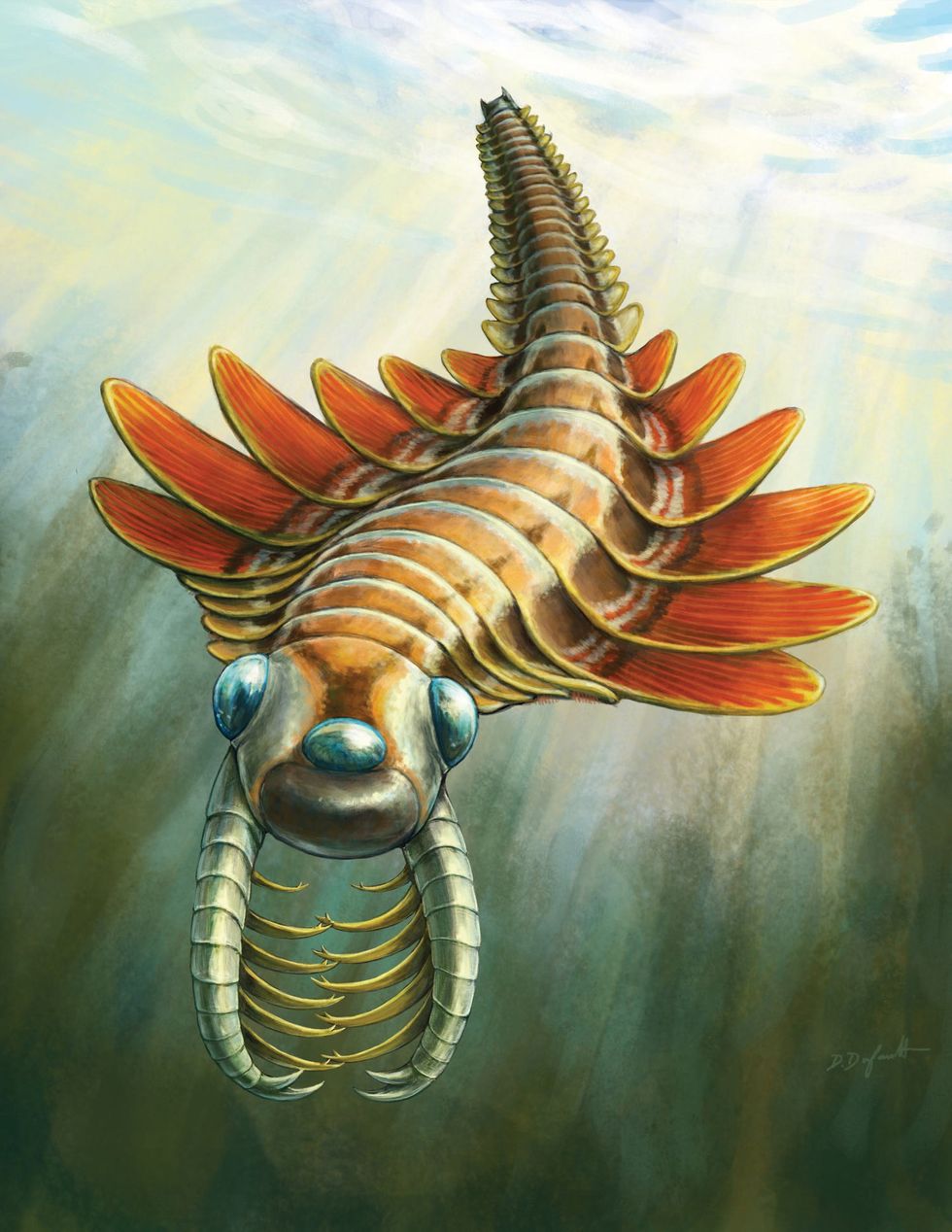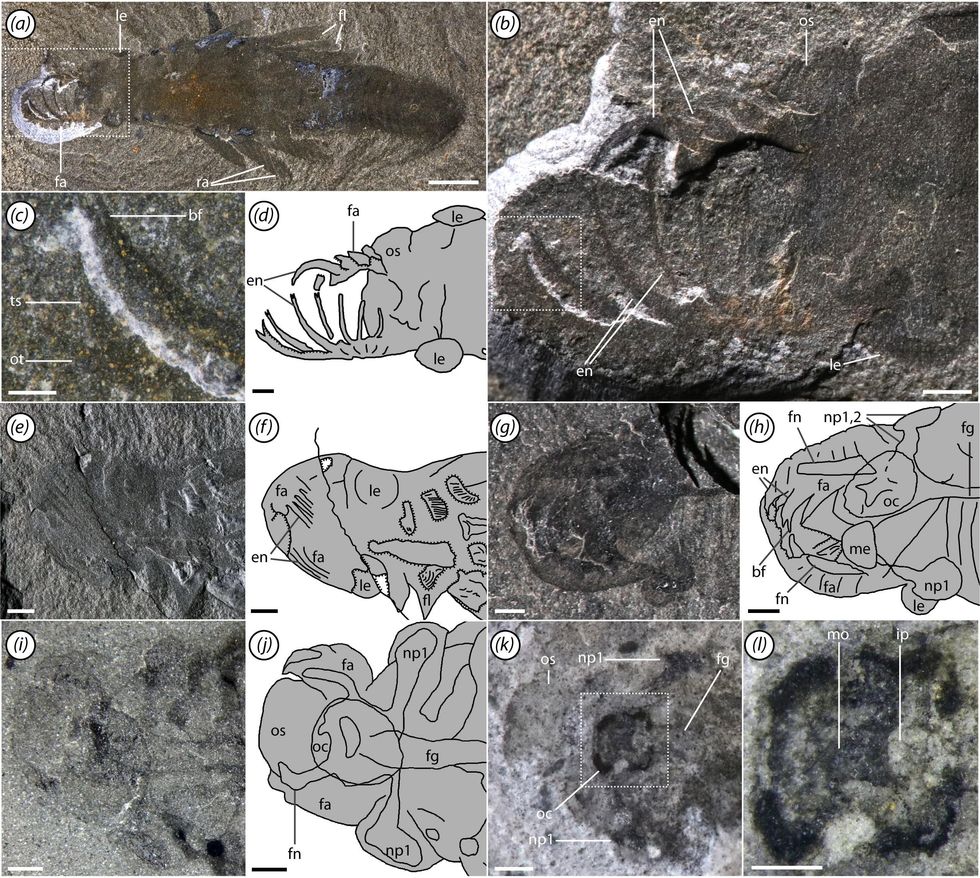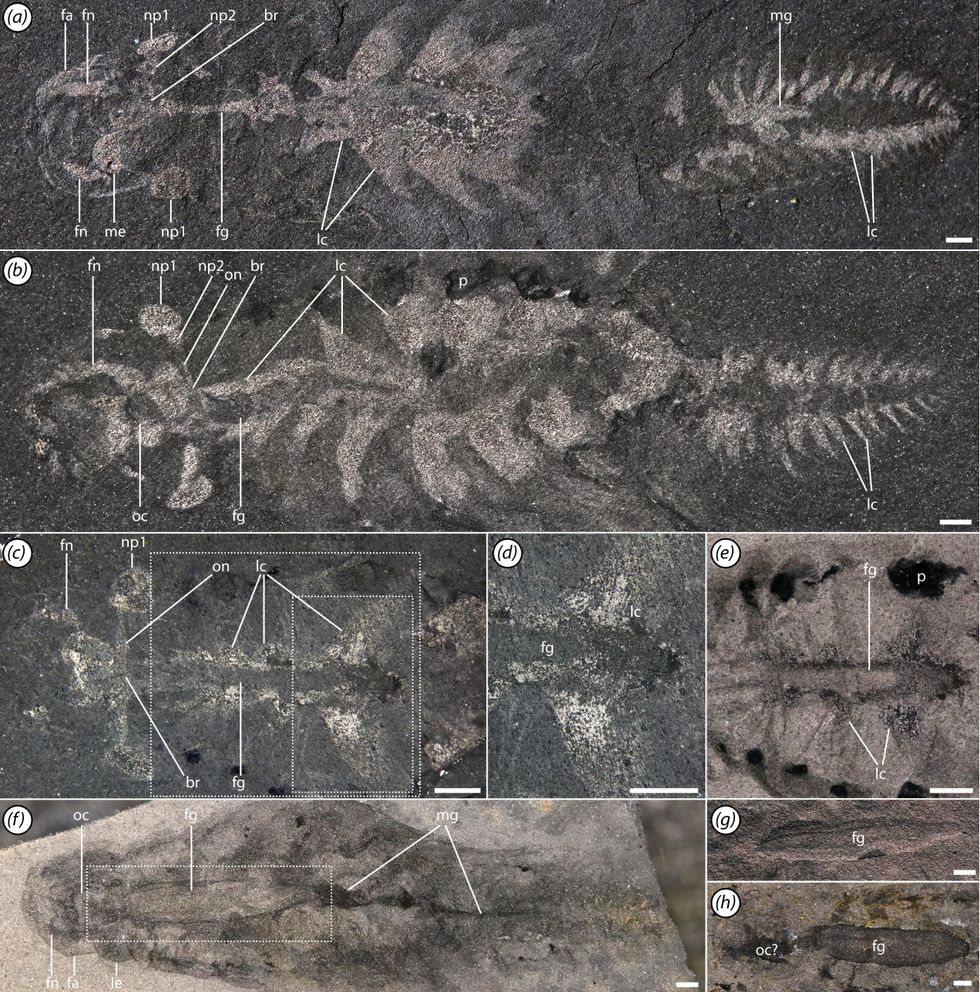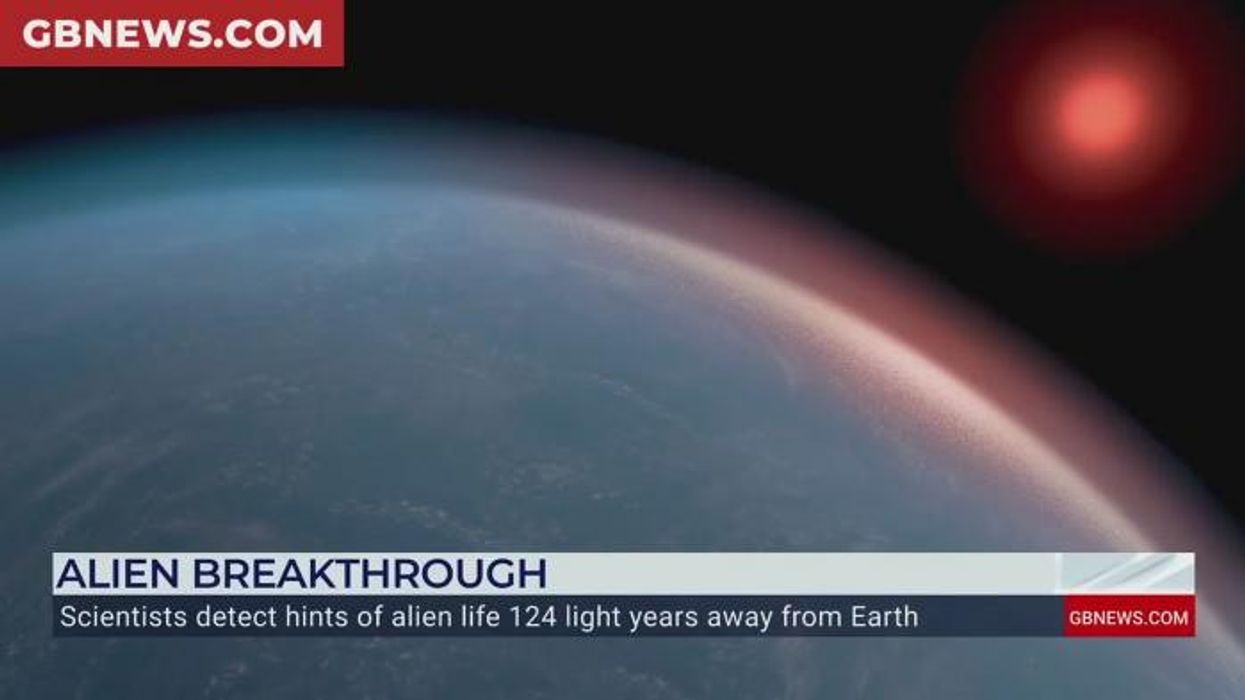Scientists discover three-eyed ancient predator 'unlike any living animal' - 'Details are astounding!'

The ancient predator is distantly related to modern moths, spiders, crabs and millipedes
Don't Miss
Most Read
Scientists have discovered a remarkable three-eyed predator which lived more than 500 million years ago.
The fossil species, named Mosura fentoni after the fictional Japanese monster - and rival to Godzilla - Mothra, was found in Canada's Burgess Shale by researchers from the Royal Ontario Museum.
The ancient creature, unlike any living today, was approximately the size of an index finger and featured a distinctive body structure that has provided valuable insights into early arthropod evolution.
Mosura fentoni, also dubbed "sea moth" due to its broad swimming flaps and narrow abdomen, possessed a remarkable set of features.

Mosura fentoni has also been dubbed 'sea moth' due to its broad swimming flaps and narrow abdomen
|DANIELLE DUFAULT, ROYAL ONTARIO MUSEUM
It had three eyes, spiny jointed claws, and a circular mouth lined with teeth.
The creature's distinctive swimming flaps ran along the sides of its body, contributing to its moth-like appearance.
It belonged to an extinct group of animals called radiodonts, which included the metre-long marine predator Anomalocaris canadensis.
"This is a neat example of evolutionary convergence with modern groups like horseshoe crabs, woodlice, and insects," explained Joe Moysiuk, who co-authored research published in the journal Royal Society Open Science.
Mosura had a unique abdomen-like body region with multiple segments at its back end, representing an interesting case of evolutionary adaptation.
MORE ANCIENT SCIENTIFIC BREAKTHROUGHS:
- Archaeology breakthrough as young boy unearths Jurassic fossils in his OWN garden
- Archaeology breakthrough as scientists finally solve 500m-year fossil mystery
- Dinosaur discovery as two NEW species unearthed in 125,000,000 year-old fossil
- Archaeologists find remarkable 240 million year old fossil of 16ft 'dragon'

Images from the Burgess Shale fossil grounds in Canada show ancient Mosurae
|WIKIMEDIA COMMONS
Scientists are not certain why Mosura developed a body structure like this - but suspect it might be related to a specific habitat preference requiring more efficient respiration.
While distantly related to modern moths, Mosura belonged to a deeper branch of arthropods that includes spiders, crabs and millipedes.
"Radiodonts were the first group of arthropods to branch out in the evolutionary tree, so they provide key insight into ancestral traits for the entire group," said Jean-Bernard Caron, another author of the study.
"The new species emphasises these early arthropods were already surprisingly diverse and were adapting in a comparable way to their distant modern relatives."
One of the most significant aspects of the Mosura fossil is the exceptional preservation of its internal anatomy.

Mosura belonged to a deeper branch of arthropods that includes spiders, crabs and millipedes
|WIKIMEDIA COMMONS
The creature did not have arteries and veins but instead possessed an "open" circulatory system.
"The well-preserved lacunae of the circulatory system in Mosura help us to interpret similar, but less clear features that we've seen before in other fossils," Dr Moysiuk said.
The Burgess Shale fossil grounds in Canada's Yoho and Kootenay National Parks, recognised as Unesco World Heritage Sites, offer rare insights into how fossils are preserved, researchers said.
"Very few fossil sites in the world offer this level of insight into soft internal anatomy. We can see traces representing bundles of nerves in the eyes that would have been involved in image processing, just like in living arthropods," Dr Caron added.











